Less than 10 months after the existing Lily 2 came out, Garmin has pretty substantially upgraded the offering with the new Lily 2 Active. This watch, as the name might imply, is definitely targeting a more sporty customer, with built-in GPS, new sport modes, new structure workouts, sensor pairing, and more.
Both myself and my wife have been giving the new Lily 2 Active a whirl, on our recent workouts, seeing how it holds up. Of course, while all Garmin watches have some health/fitness/sport flare to them, the spectrum is quite wide these days. This product, like previous Lily and VivoMove units before it, is aimed as providing a minimalist watch that doesn’t look like a smartwatch. When the screen is powered off, it has a fashionable-looking surface instead. Yet otherwise, it tracks almost all the same 24×7 daily activity and sleep metrics as one of Garmin’s $1,000 Fenix 8 watches.
So, let’s dive into it!
What’s new:

The Lily 2 obviously leans heavy on the existing Lily 2 product, but there are a number of key new area, which now include the following new features of the Lily 2 Active, compared to the original Lily 2:
– Added built-in GPS (no phone required for GPS tracking), with 9hrs GPS battery life
– Added 15 new sport profiles
– Added two buttons for easier user interface navigation
– Added sensor pairing: Heart Rate, Speed/Cadence, ANT+ Lights, Running Footpod, ANT+ Cycling Radar, Tempe (temperature)
– Added heart rate broadcasting to 3rd party devices/apps (e.g. Peloton)
– Added a compass
– Added heart rate variability (HRV) tracking
– Added Nap Detection
– Added Health Snapshot feature
– Added Golf Features
– Added Garmin Coach
– Added Structured Workouts
– Added Advanced Swim Metrics
– Garmin Pay now standard (previously only Classic Models)
– Increased battery life to 9 days (from previous 5 day claim)
– Switches to Garmin standard charging port
Given the Lily 2 line is still kinda new in my eyes, here’s a quick refresher on what’s new in the Lily 2 compared to the Lily 1:
– Changed from plastic case to metal case
– Switched to standard 14mm band design (vs previous 14mm proprietary design)
– Adds Sleep Score and Sleep Details on watch widget
– Adds incident detection (e.g. bike crash) safety alerts
– Adds Garmin Pay to classic editions (contactless payments)
– Also added new sport profiles: HIIT, Row Indoor, Walk Indoor, Meditation
– Adds Dance Fitness Feature, with Dance Types: Afrobeat, Bhangra, Bollywood, EDM, Hip Hop, Latin, Line Dancing, Pop & Jazz, Video Game, Cardio
– Priced at $249 for Lily 2 with a silicone band, $279 for Lily 2 Classic Nylon band, and $299 for Lily 2 Classic Leather (all of which is a $50 increase from Lily
And then, for those not familiar with the Lily series, here’s all the baseline Lily bits:
– Smartwatch with 24×7 activity tracking for steps/distance/calories
– Optical HR sensor for 24×7 heart rate tracking (Garmin ELEVATE Gen 4)
– PulseOx sensor for sleeping SpO2 tracking
– Tracks respiration/breathing rate 24×7
– Tracks stress and sleep automatically
– Sports tracking (per above/below sport profiles)
– Displays smartphone notifications, as well as details like calendar appointments and the weather
– Has live tracking, including safety and incident alerts
– Includes female health tracking for both menstrual cycles and pregnancy tracking
– Tracks your VO2Max based on workout data
– Does not include stair tracking (no barometric altimeter)
– Does not include music storage/playback, but can control music on your phone
Here’s all the sports profiles that are on the Lily 2:
Run, Treadmill, Bike, Bike Indoor, Pool Swim, Yoga, Walk, Walk Indoor, Indoor Track, Strength, HIIT, Cardio, Pilates, Elliptical, Stair Stepper, Row Indoor, Row, SUP, Golf, Disc Golf, Ski, XC Classic Ski, Snowboard, Snowshoe, Breathwork, Meditation, Tennis, Pickleball, Padel, Jump Rope, Other, Dance Fitness, Health Snapshot
Phew, got all that? Good, let’s get into using the watch.
The Basics:
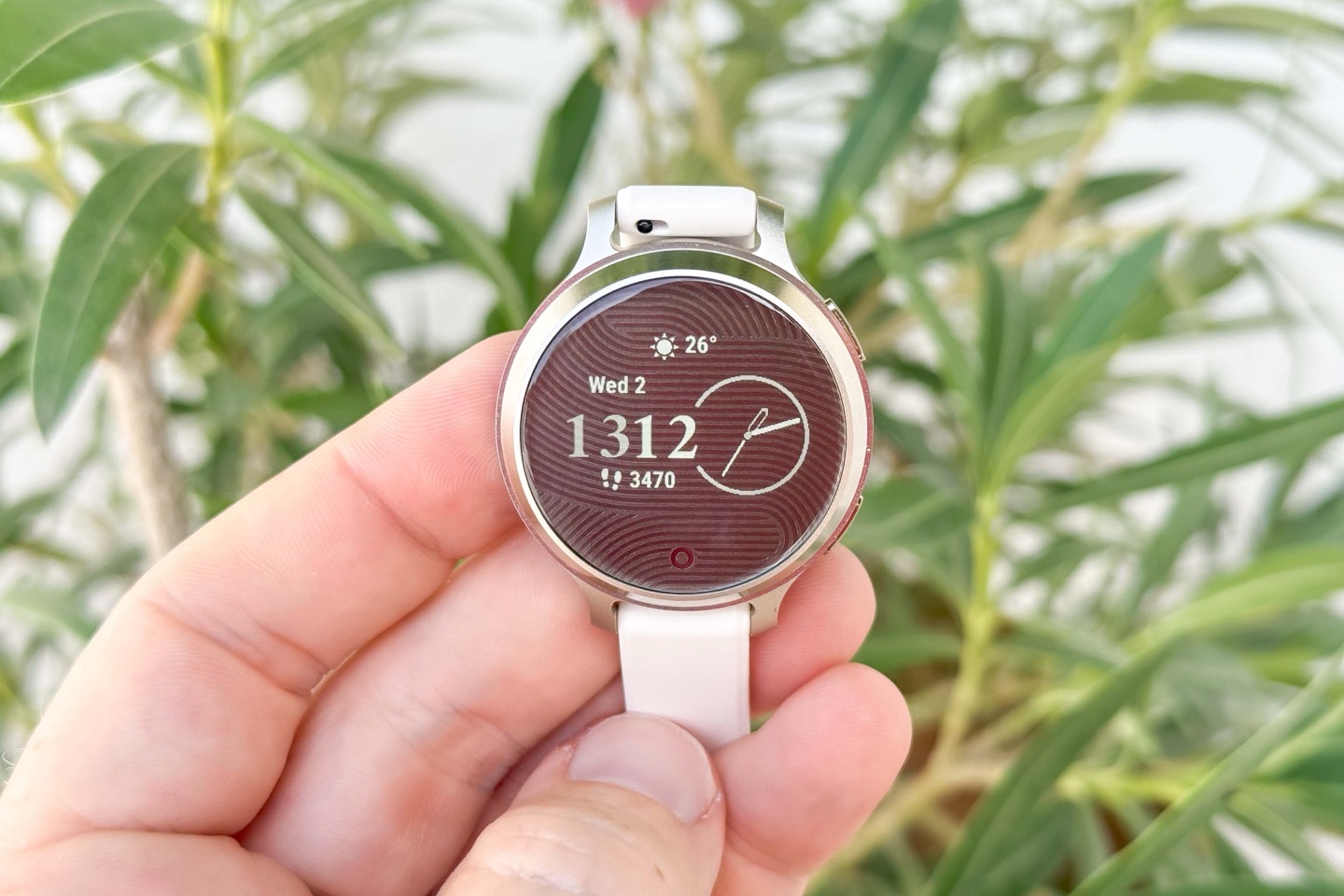
One of the things Garmin continues to do a pretty solid job of, is keeping almost all of their watches at the same level of daily activity tracking and health tracking features, albeit there are some slight differences in terms of things like lack of stair tracking on the Garmin Lily 2 Active, due to lack of barometric altimeter.
Nonetheless, starting off with the most basic of aspects: The screen and controls. The Lily 2 Active adds two buttons, which are very much appreciated here. While there was a trend by many watch companies away from buttons a few years ago, that trend has thankfully reversed course, as logic has set in: Not everything is great with touch screens, especially in fitness.

As with most Garmin watches, the upper right button is your confirmation/OK button, and the lower right button is your escape/back button. Also like most Garmin watches, that upper right button is where you tap to start/select a sport mode.
However, there’s also a tiny little ‘button’ at the bottom of the screen. This button/touch area acts as a quick-access button to be customized and go directly to a given screen (such as the watch face). And, if on the watch face, you can tap it to iterate through the various metrics at the top.
Speaking of which, here’s the default watch face, which illuminates when you raise your wrist:

Otherwise, when your wrist is down, it looks like this – with the screen elements completely invisible:

You can change to other watch faces, as well as enable/disable certain metrics/complications. You don’t quite have as much flexibility as other Garmin watches in this area though.
Next, if you swipe to the left/right, you’ll go through your widgets. These are metrics like steps, sleep, health stats overview, calendar, weather, Body Battery, HRV Status, and plenty more.

You can then tap into any given one, such as this one on steps, to see more details about it:



And then all of this data is also in Garmin Connect mobile, for both immediate and long-term trending:
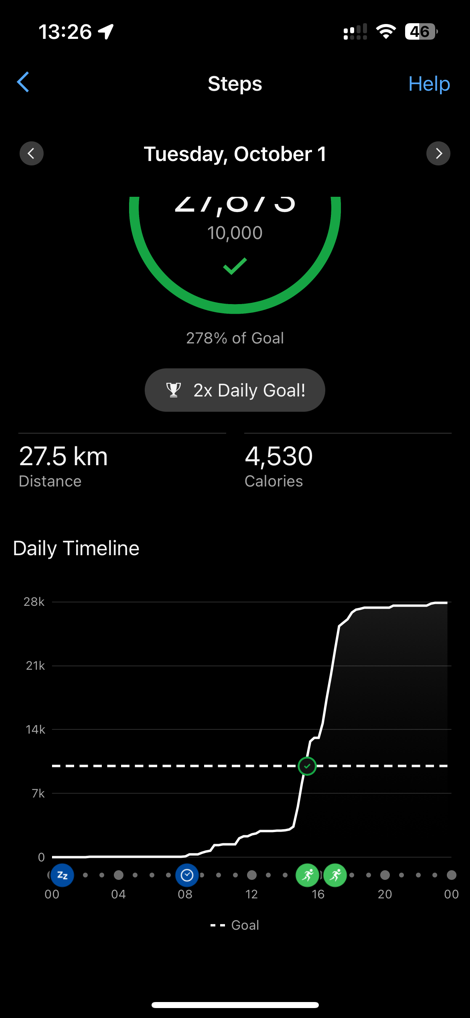

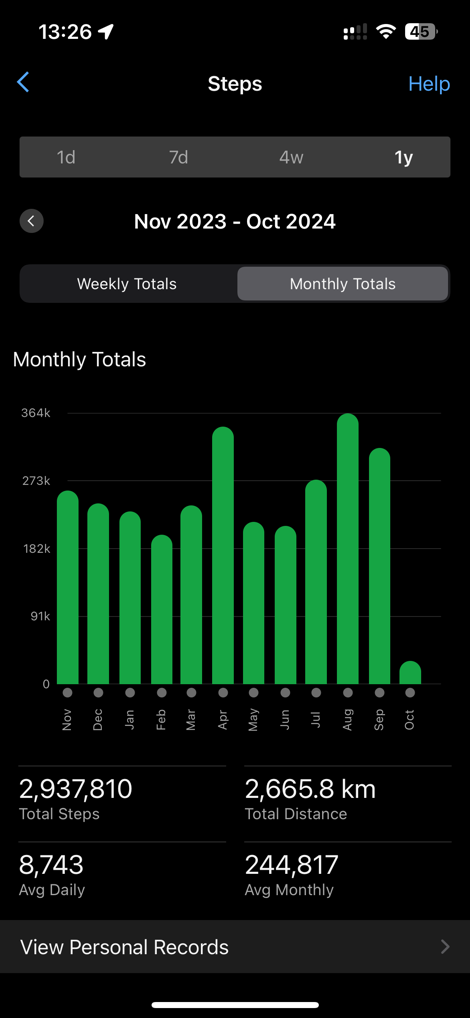
Likewise, you’ll see the same for sleep:



From a sleep tracking perspective, it’s nailed my fall asleep/wake-up times within 1-2 minutes each time, which is what I tend to see on Garmin watches these days. I don’t however rate the accuracy of the sleep stages/phases (e.g. REM/Deep/etc…), as there isn’t actually super accurate ways of comparing sleep stages, with most of those methods only topping out in the mid-80% accurate range. Hardly all that accurate. Instead, I find that if wearables are properly capturing awake/asleep time, that’s really the key bit of information.
In any event, you can see all this sleep data on the watch, as well as within the Garmin Connect app (or website). Here’s an example of the sleep data.
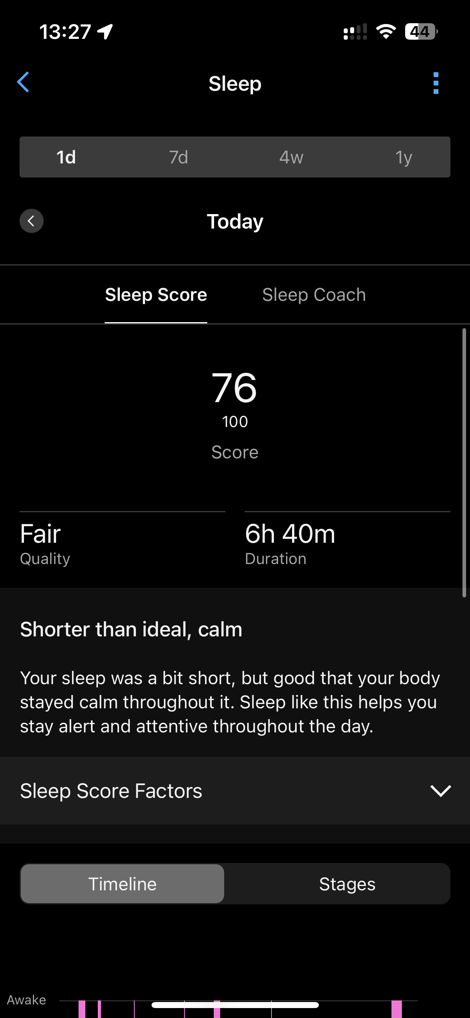

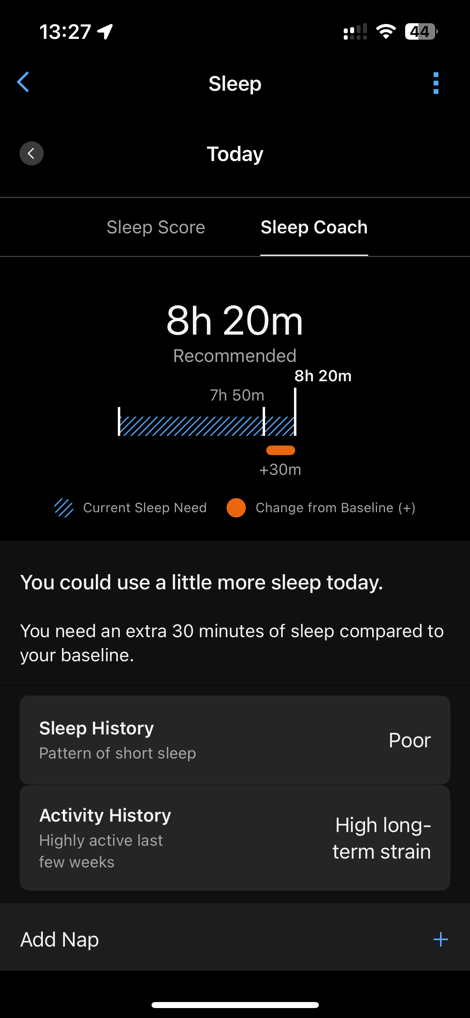
Likewise, one of the new features on the Lily 2 Active is the addition of heart rate variability (HRV) tracking. You’ll get immediate date after your first night’s sleep (which is when HRV data is tracking in this context), though it’ll take 19 nights of sleep to start getting trending data (such as ‘Balanced’ or ‘Unbalanced’). There are countless factors that can influence HRV (sleep quality, alcohol, training, jet lag, sickness, etc…). But it can be used with your knowledge of what’s going on in your life, to figure out if perhaps your overdoing it.



Speaking of all this heart-rate driven stuff, that comes from the optical heart rate sensor on the back of the watch, which is Garmin’s Elevate V4 optical HR sensor. That means that it’ll track most workouts pretty well (there’s only a minor increase in accuracy compared to V5), but it won’t do ECG or skin temperature, as the V5 does.

It does however do blood oxygen monitoring (called PulseOx by Garmin), at night. As you can see in the sleep stats above.
Finally, the unit can display smartphone notifications, as well as control your music on your phone. There’s no music storage on the device itself however.
With that, let’s shift into using it for sports.
Sport Usage:

The Lily 2 Active’s upgrades around the sports realm are pretty notable, especially if you felt the lack of GPS in the existing Lily 2 was a deal-breaker. This bridges that gap, and gives you a few data pages per sport profile (with up to three data fields per data page), along with large pile of sport profiles. Plus, you’ve now got buttons that make the whole sports thing much easier than the previous and sometimes finicky during workouts, touch only display.
To begin a workout, you’ll tap the (new) upper right button, which opens up a sports listing:

You can customize this listing on the watch, or via the app, changing which sports are included. Here’s a complete listing of all the sports offered:
Run, Treadmill, Bike, Bike Indoor, Pool Swim, Yoga, Walk, Walk Indoor, Indoor Track, Strength, HIIT, Cardio, Pilates, Elliptical, Stair Stepper, Row Indoor, Row, SUP, Golf, Disc Golf, Ski, XC Classic Ski, Snowboard, Snowshoe, Breathwork, Meditation, Tennis, Pickleball, Padel, Jump Rope, Other, Dance Fitness, Health Snapshot
Within each sport profile, you can customize the sport profile, as well as teh dat pages. This includes two data pages (screens), with up to 3 data fields per page/screen.
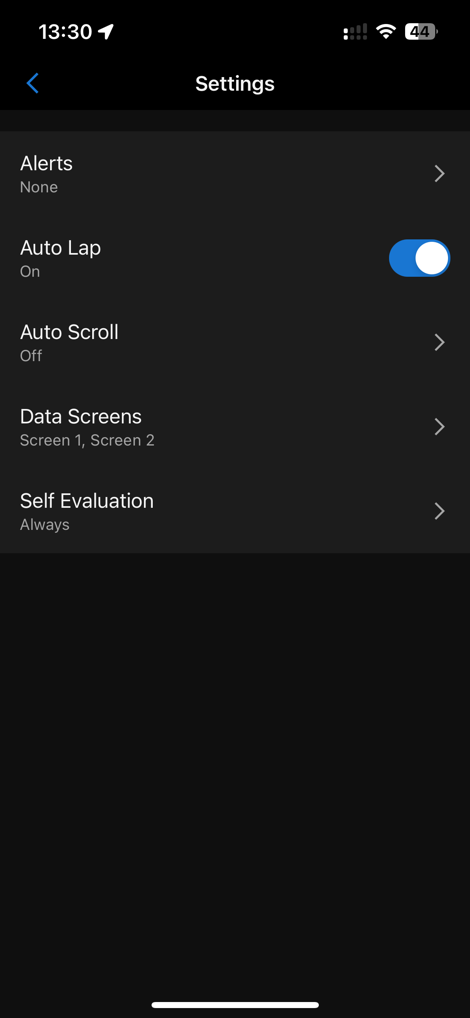
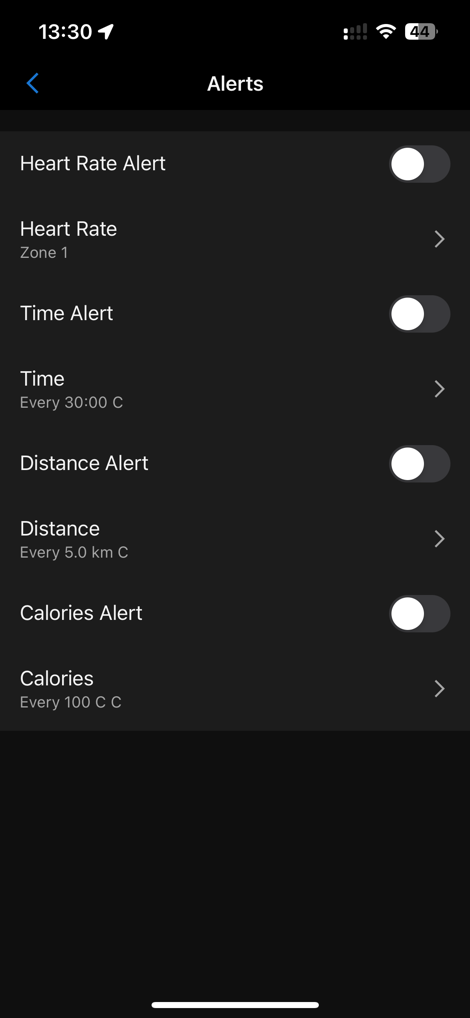
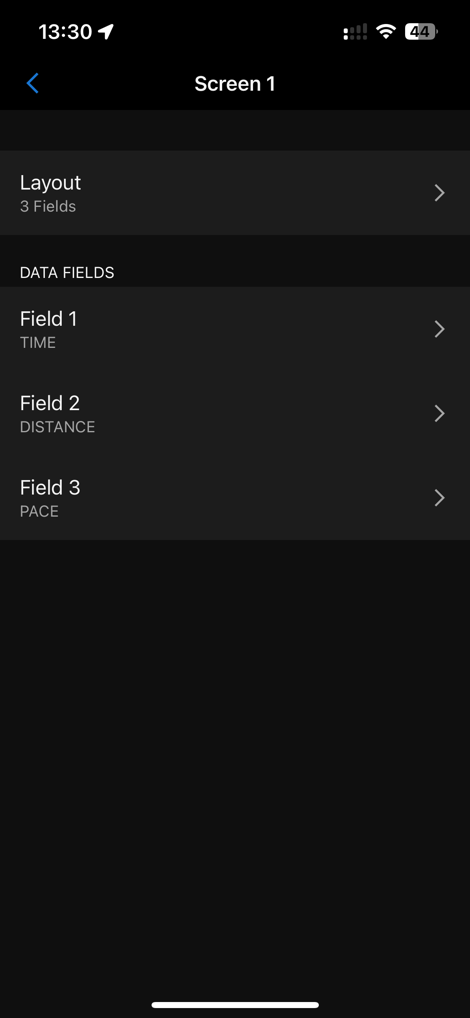
There’s a reasonably strong set of data fields, especially compared to some of their competitors in this space. You’ve got all the common ones, but also less expected ones like compass heading, temperature, 24-hour min/max temps, sunrise, sunset, and more.
That’s in addition to Auto Scroll, Auto Lap, and alerts including heart rate zone alerts, time alerts, distance alerts, and calorie alerts. Once you’ve decided on all that stuff, back on your watch, it’ll show the status of the GPS connection, as well as any sensors you might have connected:

I’m going to use a run as a example, but all of the sports work essentially the same way.
At this point, you’ll see the data pages and fields you’ve setup. You can swipe left/right through those pages, as well as hit the lap button for manual laps. Additionally, you can pause at any time via start/stop. There aren’t any other options to tweak mid-run.
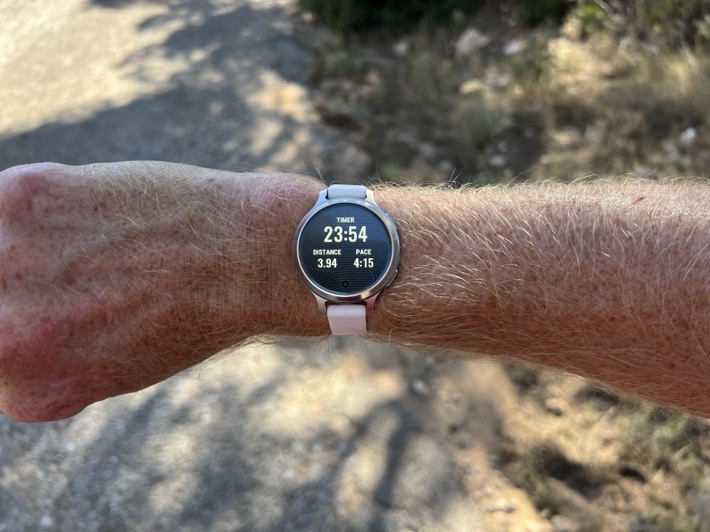

You can manually lap during a run, or leave on auto-lap.
In addition, the Lily 2 Active supports Garmin’s Live Tracking, if your phone is with you. This lets your friends and family see your GPS-enabled workouts, including your workout data. This is useful not just for day to day workouts, but also for things like a marathon, letting them track you in real time. You can configure whether this automatically triggers for each workout, or is manually done. I just leave it on automatic notifications for each run to my wife.
At the completion of your workout, you’ll see a pile of summary screens. These more closely resemble what Garmin has on their mid-range and higher-end devices, all of which is an upgrade over the very basic summary fields on the Lily 2.
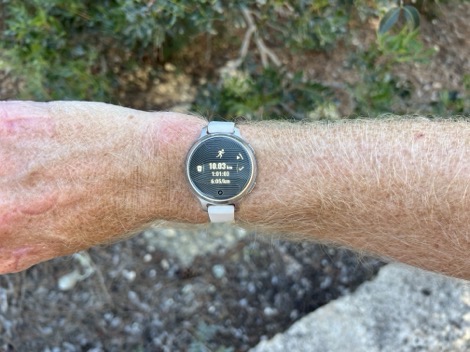

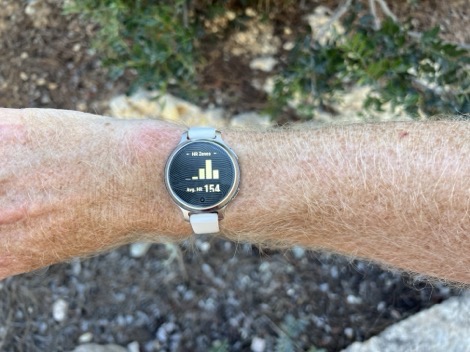
Your workout will sync to Garmin Connect (their training and analysis platform), where you can view it in much more detail, as well as transmitting over to any 3rd party platforms you’ve got (such as Strava, TrainingPeaks, etc…).
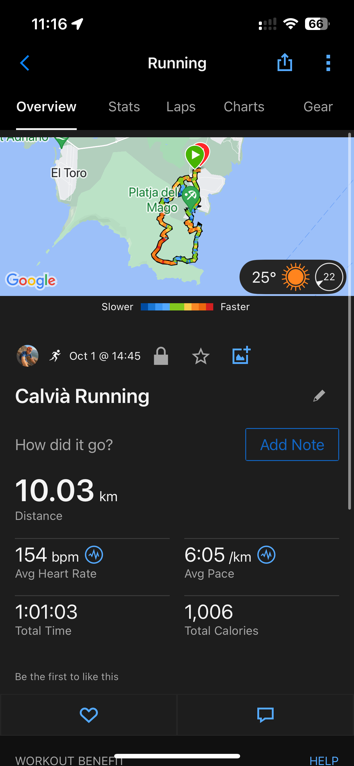
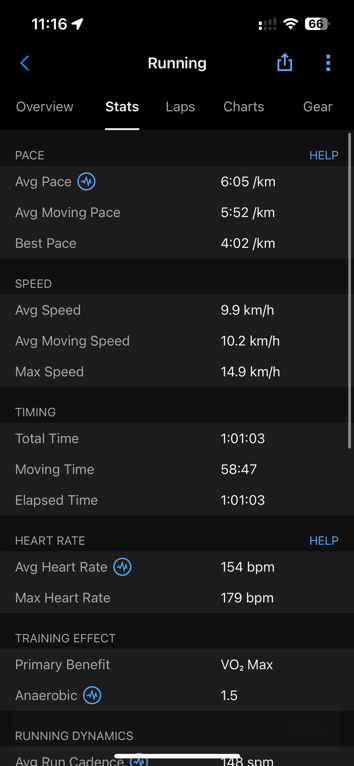


Now, one of the new features on the Lily 2 is the connectivity to 3rd party sensors. This includes all of the most common ones people tend to use, with the exception of a cycling power meter. But even I’d agree that the cross-over between people wearing this watch and cycling power meters is probably pretty minimal.


The above will connect to those sensors, and then record the data to your activities, just like any other high-end Garmin watch.
If however, you want to broadcast your heart rate to another platform in real-time, such as connecting a Peloton Bike, other ANT+/Bluetooth gym equipment, or any other device/app, you can do so with heart rate broadcasting. This will broadcast your heart rate in real-time over ANT+ & Bluetooth (concurrently). You can either access it from the per-sport profile menu, or, access it via the controls menu by adding it as a custom control. Once enabled, this then lets you pair it up with other devices/apps/etc.., such as Peloton here:
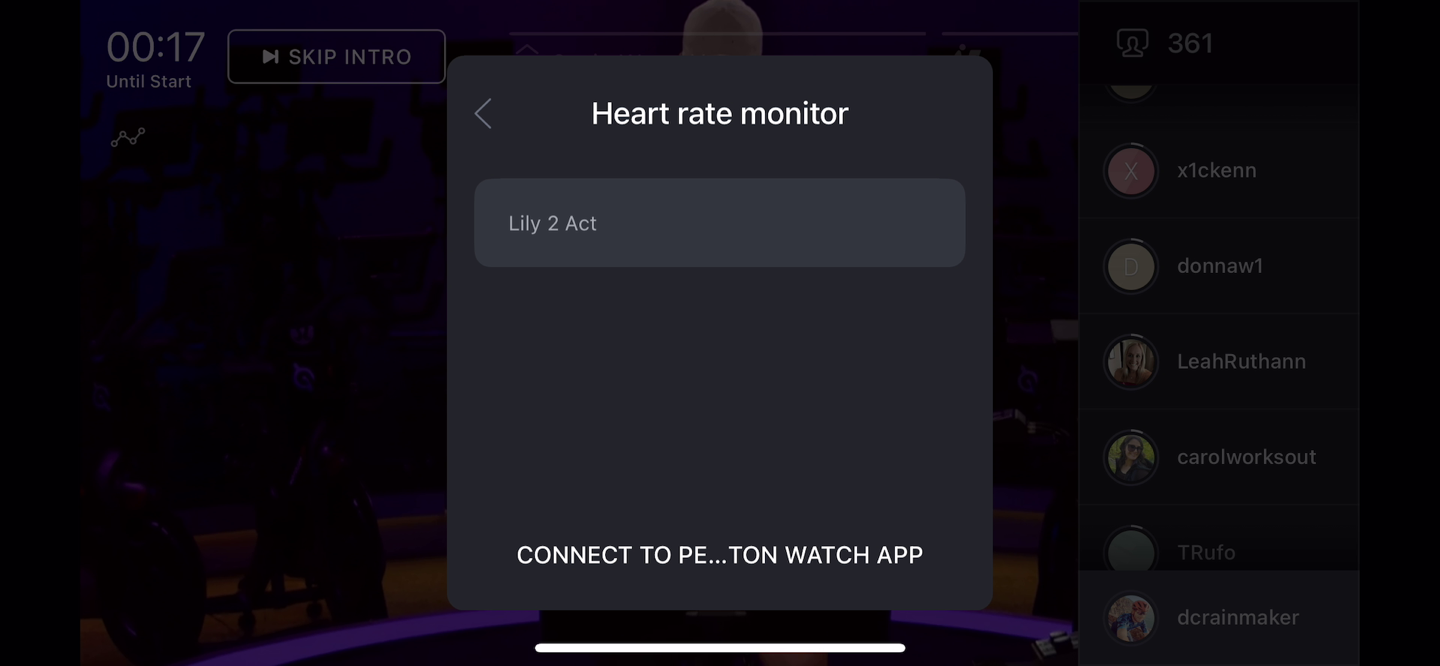
Finally, the Lily 2 Active adds in support for custom structured workouts for a variety of sports. This means you can download workouts from Garmin Connect to your watch, such as this:


This also includes the ability to leverage Garmin Coach, which lets you pick a specific running or cycling goal and then gives customized and ever-updating training schedules and workouts for you.
Overall, this is far more features than I would have expected on a next-gen Lily device.
GPS & Heart Rate Accuracy:

Garmin is leveraging the existing Garmin Elevate V4 heart rate sensor, the same one used for a number of years now on most of their watches. It’s not however their newer Garmin Elevate V5 sensor that includes ECG support, introduced ~June 2023. That’s only been seen on higher-end units, albeit the price gap from this to the Garmin Venu 3 (which has it), is pretty minimal sometimes.
Garmin hasn’t specified which GPS chipset they’re using, though, I’d be surprised if it wasn’t Airoha, like virtually all their other wearables.
In any case, let’s take a look at accuracy of the GPS on a few runs from myself and my wife. Starting off with me, and a trail run in the woods:
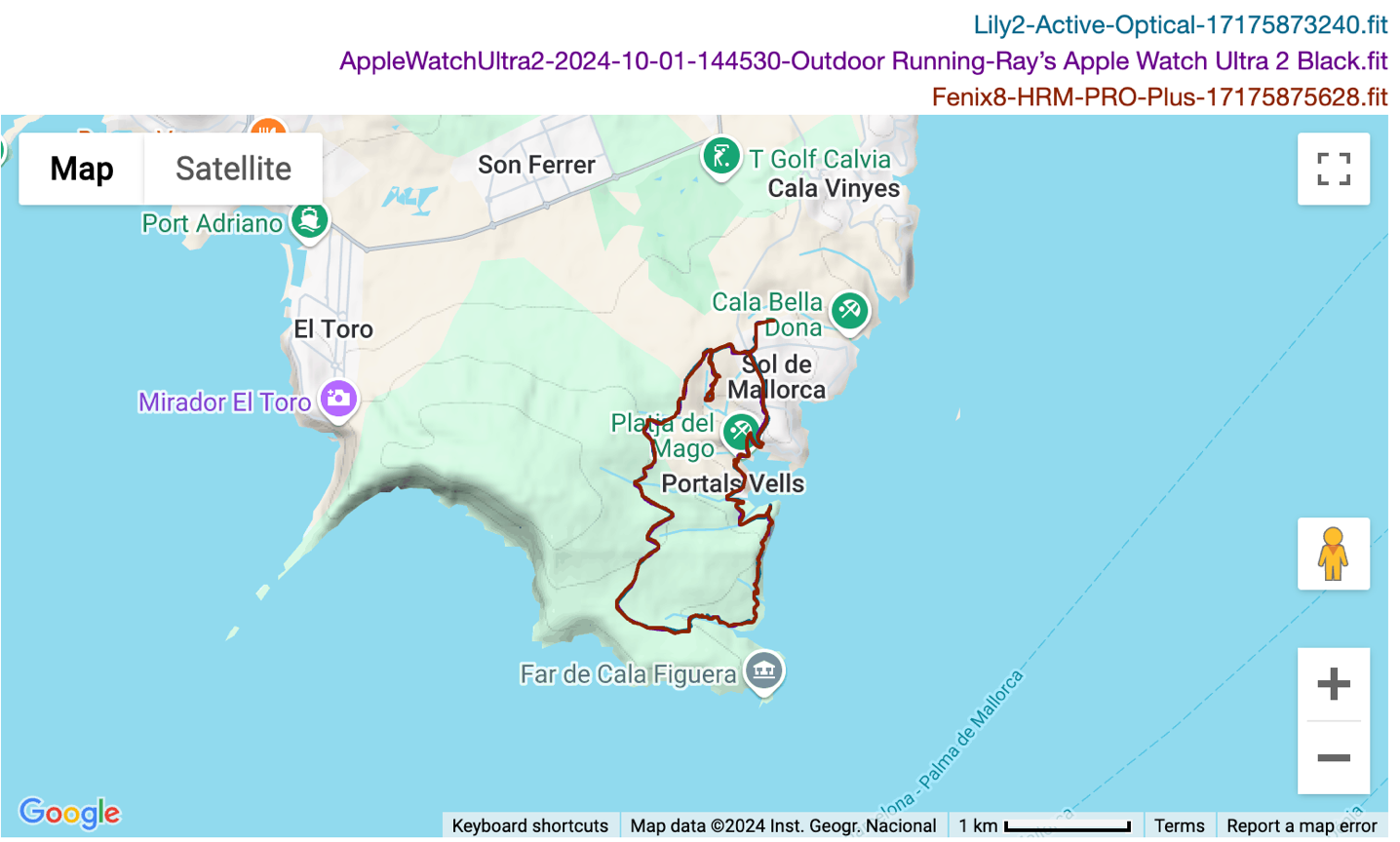
Looking at various spots, it’s near identical to the Garmin Fenix 8 and Apple Watch Ultra 2 – very solid performance.
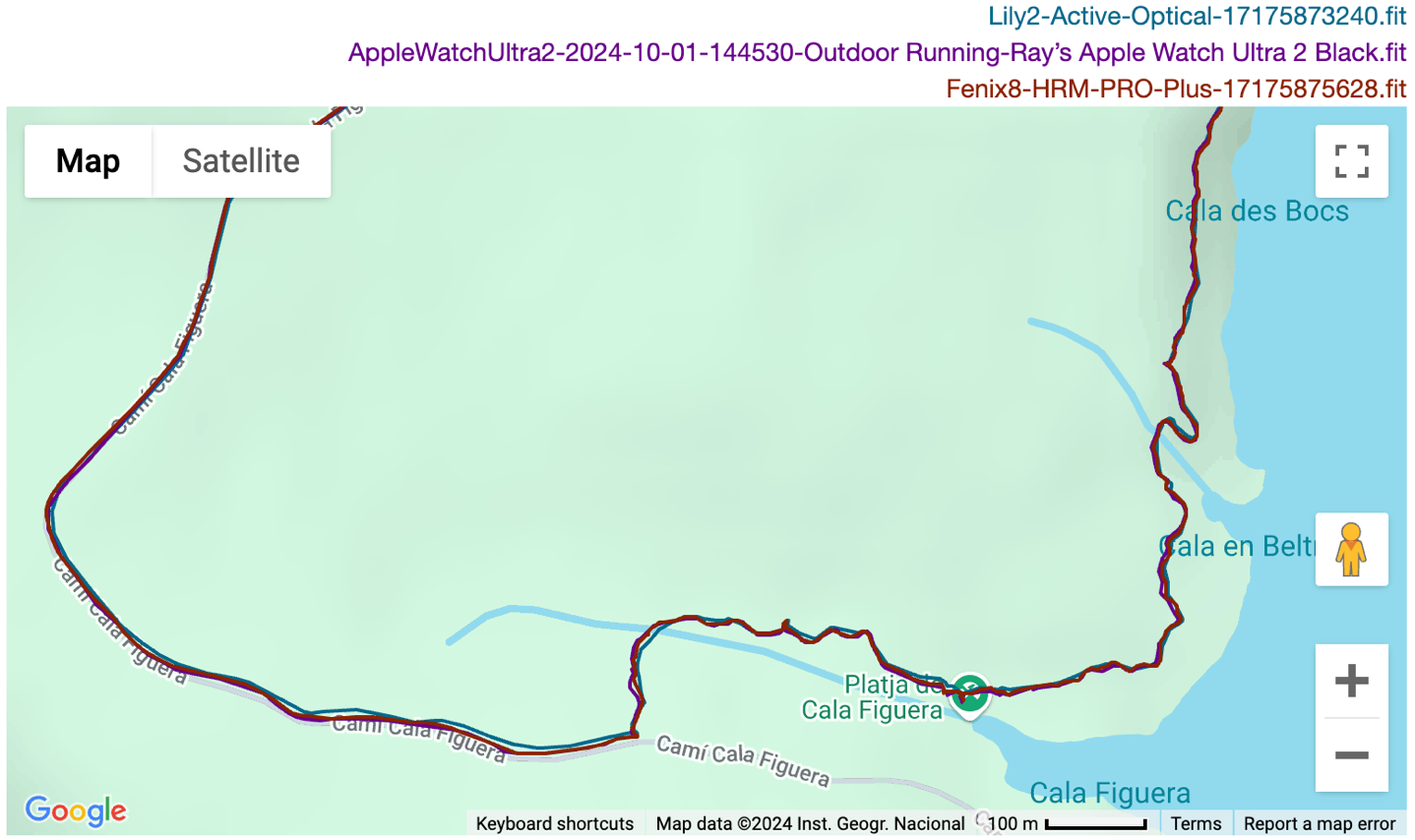
Then, looking at the heart rate side, it only made 1-2 minor-ish mistakes, slight delays when I quickly increased the pace up some sharp inclines. Nothing major, but notable.
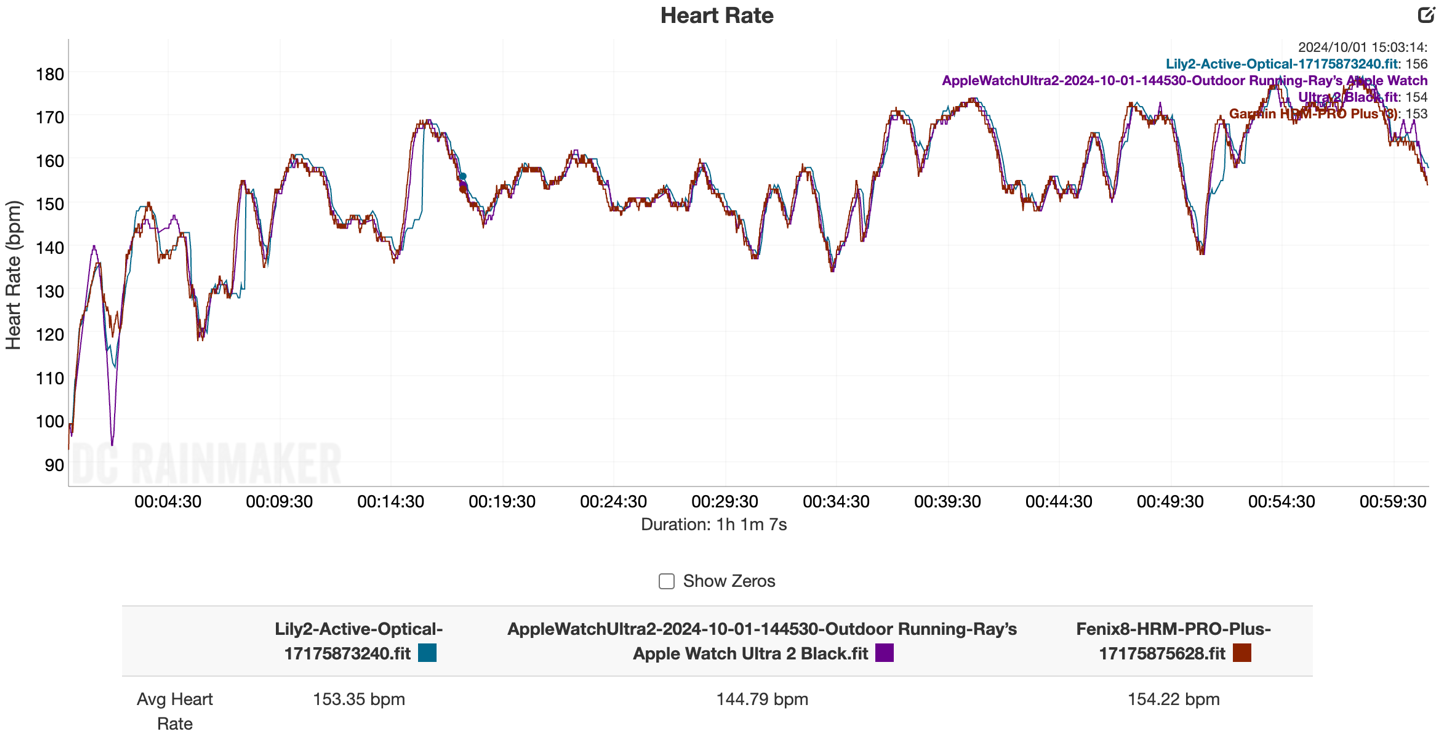
Next, looking at an interval workout my wife did, she’s in an area that’s somewhat open, but also next to some occasional big buildings.
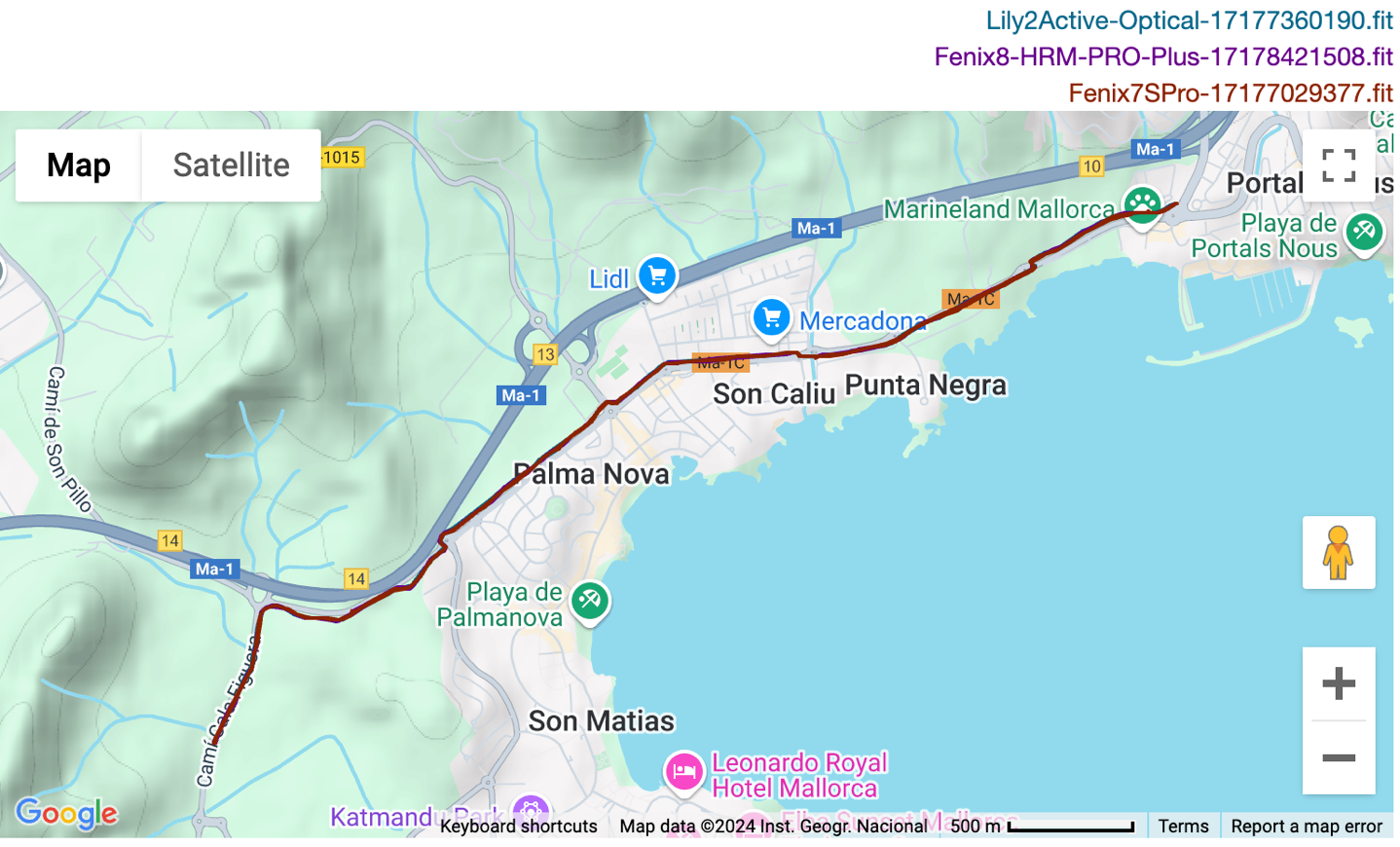
You can see here, it’s virtually identical to the Fenix 7S Pro Solar Sapphire, and Fenix 8 she had with her:
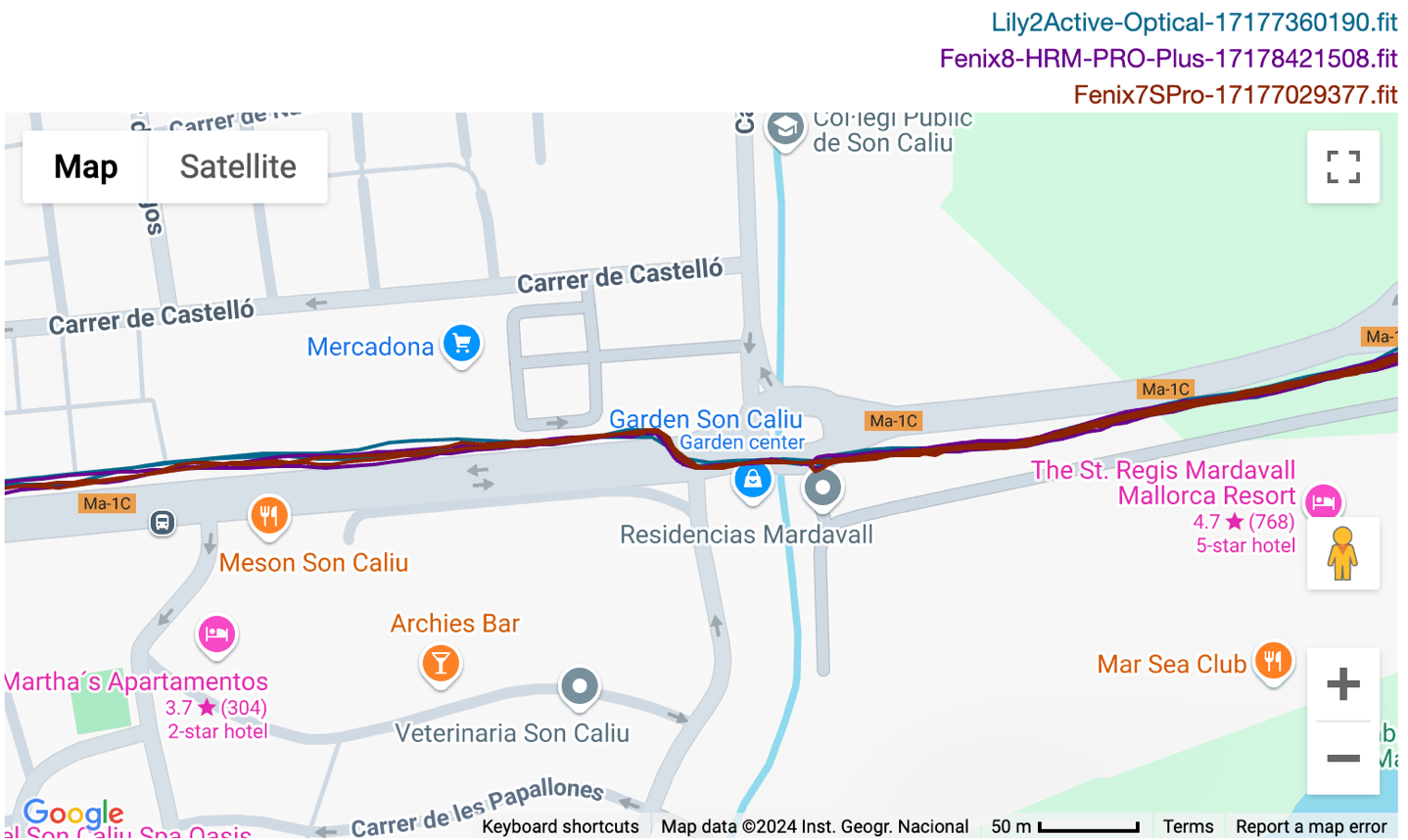
Meanwhile, on the heart rate side, for the intervals, it’s very solid. In fact, I could even make the case it beat her Fenix 7S Pro Solar Sapphire (which has a more high-end optical HR sensor, though, is a heavier watch, which can impact optical HR accuracy).

Of course, none of this is really a surprise, the Elevate V4 optical HR sensor has been around for many years now, and is well understood. Though, I’m impressed with the GPS performance given the small form factor.
Wrap-Up:

When I first saw that Garmin was coming out with another Lily 2 just 10 months after the first, I was prepared to be disappointed. But in reality, I’m actually really impressed. This should realistically be called the Lily 3, given how many new features this has. It’s a *HUGE* step up over the existing Lily 2. Be it GPS, the added sport profiles, HRV tracking, added golf, and plenty more.
Garmin seems to have managed to cram in all these things, without ruining the visual aesthetic of this watch or the minimalist feel to wearing it. Sure, I’d love to have seen them squish the ECG components into it, especially for wrist temperature bits and how that could eventually be leveraged by Garmin for better women’s health tracking, but alas, maybe that’ll be what Lily 3 in the future gets.
Overall though, it’s a solid watch that delivers in both features as well as accuracy. Heck, I can’t even complain about the price this time, as it actually seems reasonably in line with both their past products and their competitors. Good job Garmin.
Thanks for reading!


0 Commentaires